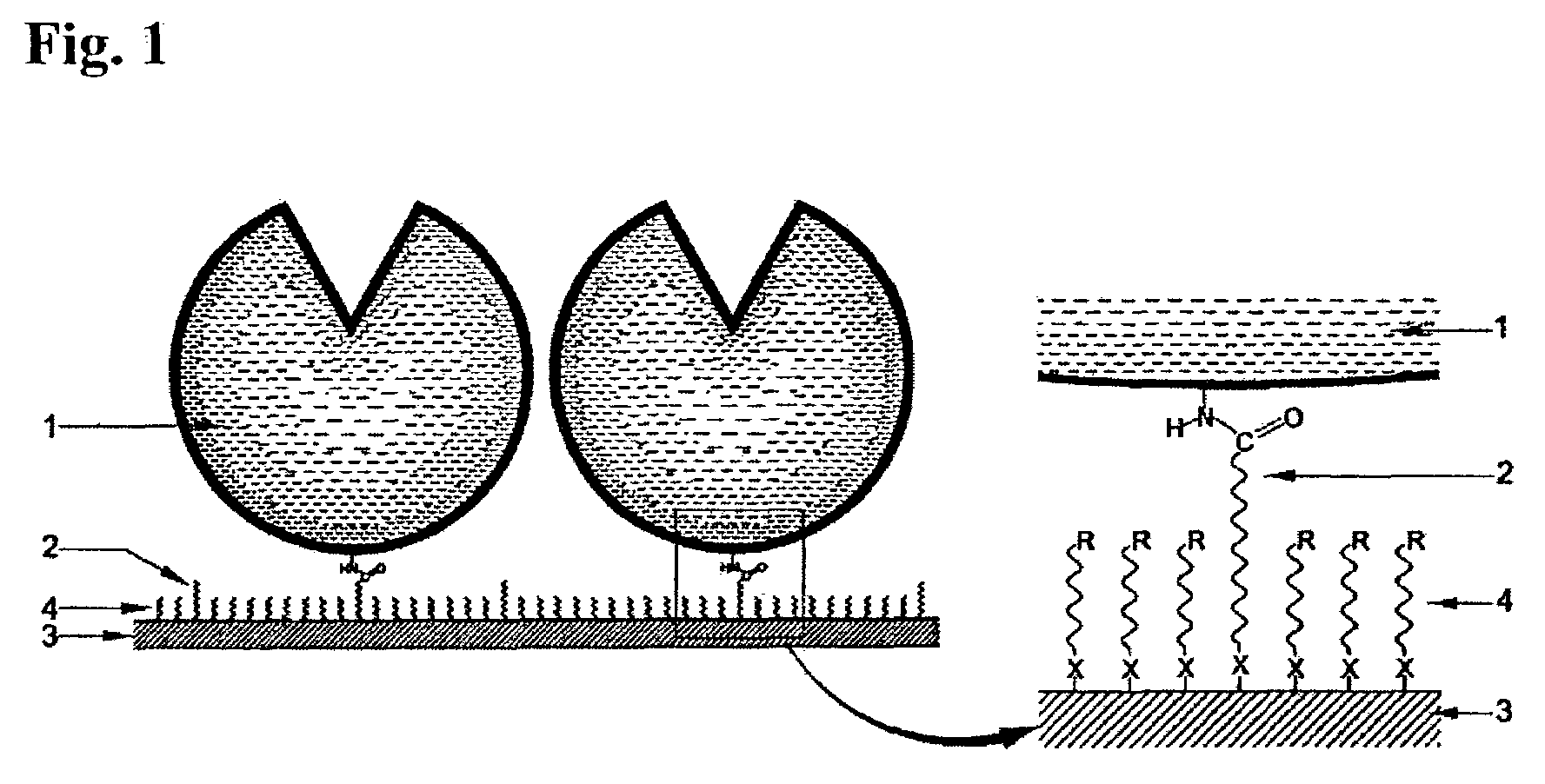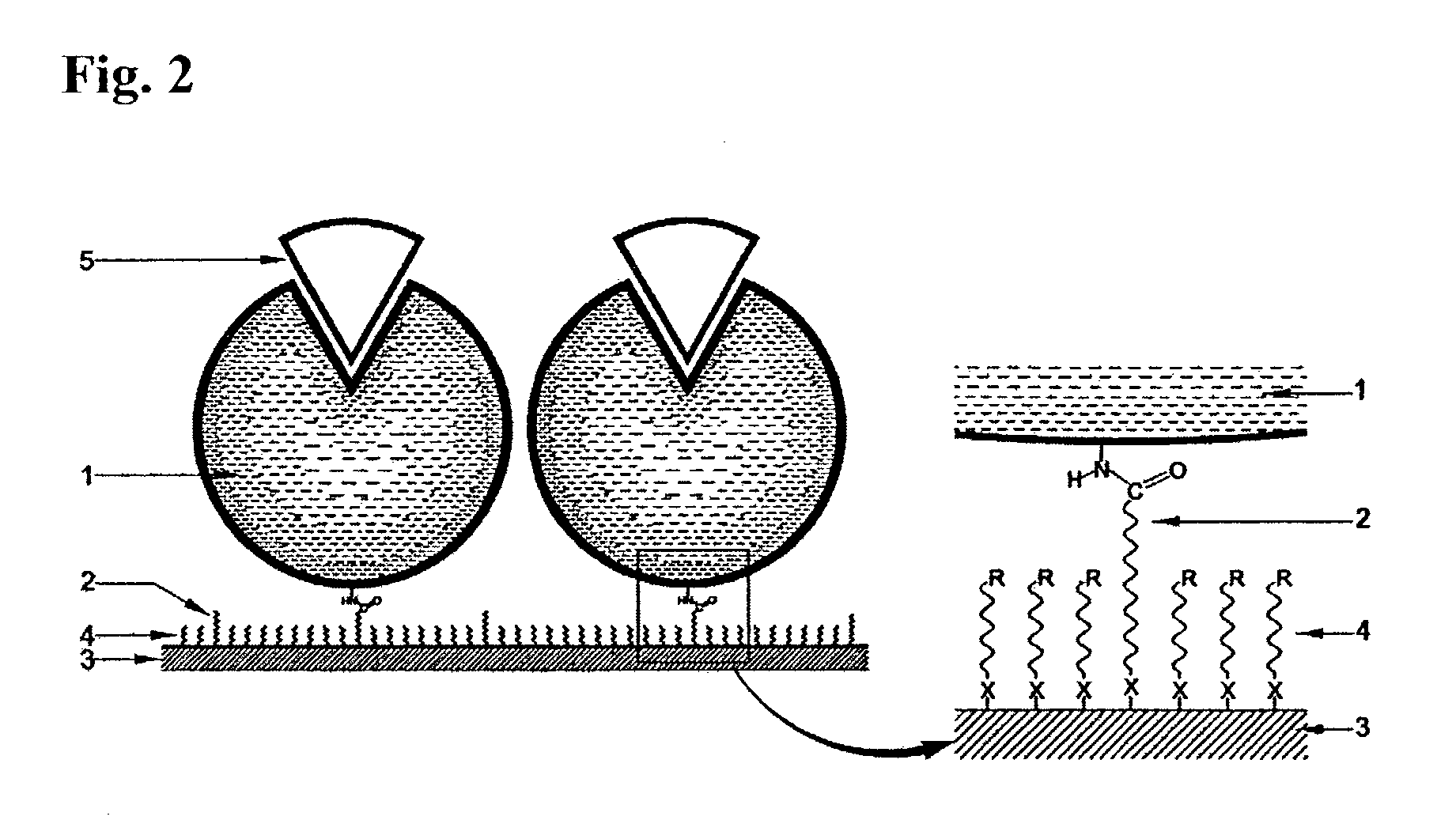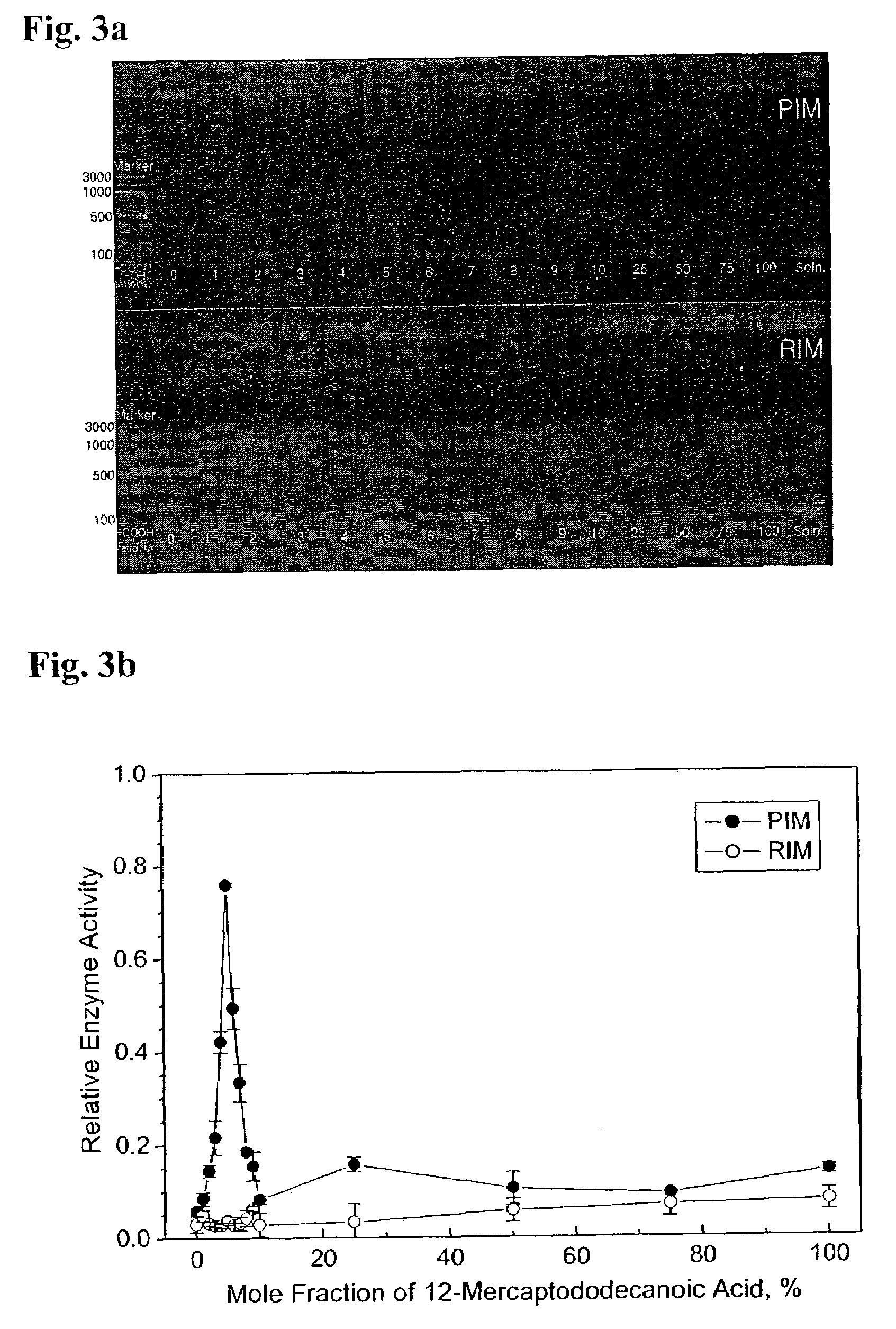Immobilized DNA polymerase
a technology of immobilized dna and polymerase, which is applied in the field of dna polymerase, can solve the problems of difficult or sometimes impossible to meet these two conditions, and achieve the effect of preserving the activity of the immobilized enzym
- Summary
- Abstract
- Description
- Claims
- Application Information
AI Technical Summary
Benefits of technology
Problems solved by technology
Method used
Image
Examples
example 1
Preparation of the Immobilized DNA Polymerase According to the Present Invention—PIM (Protected Immobilization Method)
[0086]The 65 base single stranded DNA (ss-DNA) (SEQ ID NO: 1) and the KS primer (SEQ ID NO: 2) shown below was mixed in an aqueous buffer solution at 1:1 molar ratio, and the resulting solution was incubated for 10 minutes at 94° C. and was then cooled down slowly below 35° C. During this process, the 65 base ss-DNA (SEQ ID NO: 1) and the KS primer (SEQ ID NO: 2) were annealed to form a partially double stranded DNA. An appropriate number of moles of Taq DNA polymerase (AmpliTaq Gold) purchased from Perkin Elmer (U.S.A.) was then added to this solution and the resulting mixture was incubated in a dry bath at 72° C. for 10 minutes. After this, the mixture was moved to a dry bath at 50° C. and incubated for 20 minutes to prepare the PIM enzyme solution of the masked Taq DNA polymerase.
[0087]
KS primer5′-CGAGGTCGACGGTATCG-3′(SEQ ID NO:2)65-mer3′-CCAGCTGCCATAGCTATTTTCTTTT...
example 2
Preparation of the Immobilized DNA Polymerase by the Prior Method—RIM (Random Immobilization Method)
[0094]In this example, immobilization was performed by using a Taq DNA polymerase whose active site was not masked instead of the Taq DNA polymerase masked with the partially double stranded DNA substrate used in Example 1. The other immobilization processes and reaction conditions were the same as in Example 1. The activated Au substrate was placed in the RIM enzyme solution to prepare an immobilized DNA polymerase.
example 3
Measurement of the Activity of the Immobilized DNA Polymerase
[0095]In order to measure the activity of the immobilized DNA polymerases prepared according to the methods of Examples 1 and 2, PCR was carried out, and the amount of the resulting amplified DNA was quantified. PCR was carried out in the Model 480 PCR thermal cycler of Perkin Elmer. The 65 bp ss-DNA (SEQ ID NO: 1) shown in Example 1 was used as a template, and the KS primer (SEQ ID NO: 2) and the SK primer (3′-CTAGGTGATCAAGATCT-5′) (SEQ ID NO: 3) were used as primers for PCR. The volume of the PCR solution used was 50 μl. 25 fmol of the 65 base ss-DNA (SEQ ID NO: 1), 10 pmol each of the KS primer (SEQ ID NO: 2) and the SK primer (SEQ ID NO: 3), and 1.0 nmol dNTP were added to the PCR solution. As a buffer solution, the pH 8.3, 10× buffer purchased from Perkin Elmer was used after diluting 10 times. The temperature cycle was set as follows:
[0096]Hot start step: 94° C., 10 minutes
[0097]PCR cycle (20-45 cycles): 94° C., 30 s...
PUM
| Property | Measurement | Unit |
|---|---|---|
| mole fraction | aaaaa | aaaaa |
| mole fraction | aaaaa | aaaaa |
| mole fraction | aaaaa | aaaaa |
Abstract
Description
Claims
Application Information
 Login to View More
Login to View More - R&D
- Intellectual Property
- Life Sciences
- Materials
- Tech Scout
- Unparalleled Data Quality
- Higher Quality Content
- 60% Fewer Hallucinations
Browse by: Latest US Patents, China's latest patents, Technical Efficacy Thesaurus, Application Domain, Technology Topic, Popular Technical Reports.
© 2025 PatSnap. All rights reserved.Legal|Privacy policy|Modern Slavery Act Transparency Statement|Sitemap|About US| Contact US: help@patsnap.com



